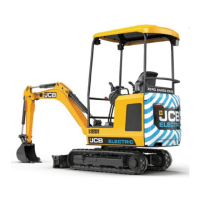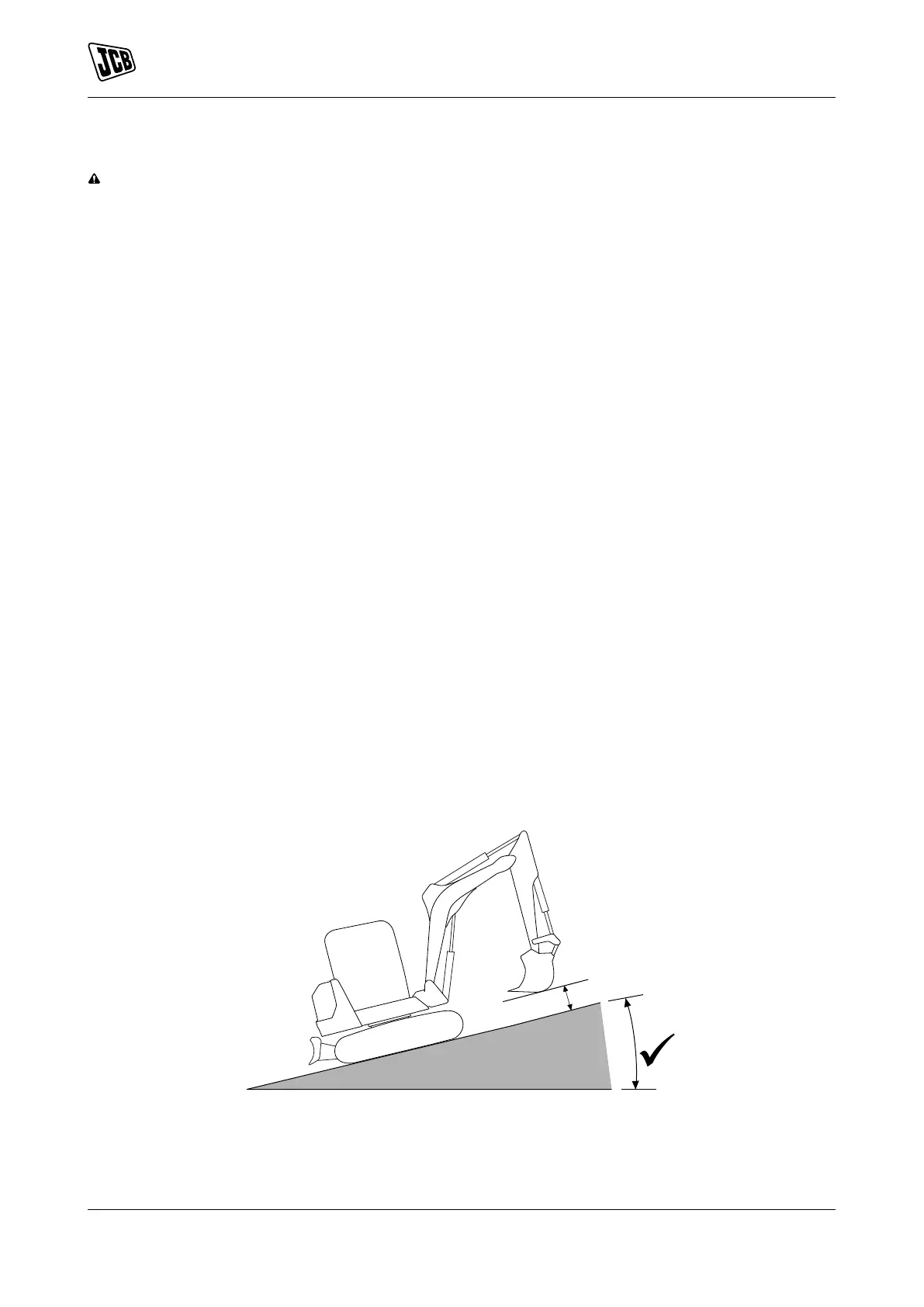Operation
Slopes
Slopes
General
WARNING Make sure that you have been trained and are familiar with the use of machines on slopes, and
understand the adverse affects that slopes and site conditions can have on stability. Never use the machine
on a slope if you do not understand the recommended practices for the use of machines in such applications.
There are a number of factors which can adversely affect the stability of the machine and the safety of the
machine and operator when used on a slope.
It is essential that a risk assessment of the work to be done is completed and that the operator complies with
any safety precautions that the assessment identifies.
Driving on Slopes
General
• Make sure that you have been trained and are familiar with the use of machines on slopes.
• Do not travel on slopes that exceed the stated stability limits within the following section.
• Only use first speed when climbing or traversing on slopes.
• Always rotate the machine so that the operator is facing the direction of travel.
• Always adhere to the travel position as stated within the following section, when climbing or traversing
on slopes.
• Only travel on slopes (climb or traverse) on stable and even ground.
Climbing on Slopes
The machine can climb slopes, as normal operation, on stable ground conditions up to 20°.
When climbing a slope, ensure the following travel position is adhered to:
1. Position the dozer behind the machine with the cab facing towards the slope.
2. Raise the dozer blade.
3. Lower the boom so that the bucket or attachment is clear of the ground as specified distance and dipper
is placed at specified angle to the ground.
Length/Dimension/Distance: 150mm
Angle: 90°
Figure 29.
A 150mm
Traversing Slopes
The machine can traverse slopes, as normal operation, on stable ground conditions between 0–10°.
50 9831/8250-4 50
JCB © Admin Pimteam - 23/06/2021 05:32.

